14 Plants That Add Texture and Movement to Late-Season Beds
Late-season gardens can sometimes look heavy, so adding plants that move with the wind can bring a softer, more inviting feel. Texture plays a big part in keeping beds interesting when the main blooms fade. These plants can draw the eye without overwhelming the space. If you are planning a small update, this guide is a helpful place to begin. Take a moment to explore and see which plants might brighten your garden as the season winds down.
This post may contain affiliate links, which helps keep this content free. Please read our disclosure for more info.
Japanese Forest Grass
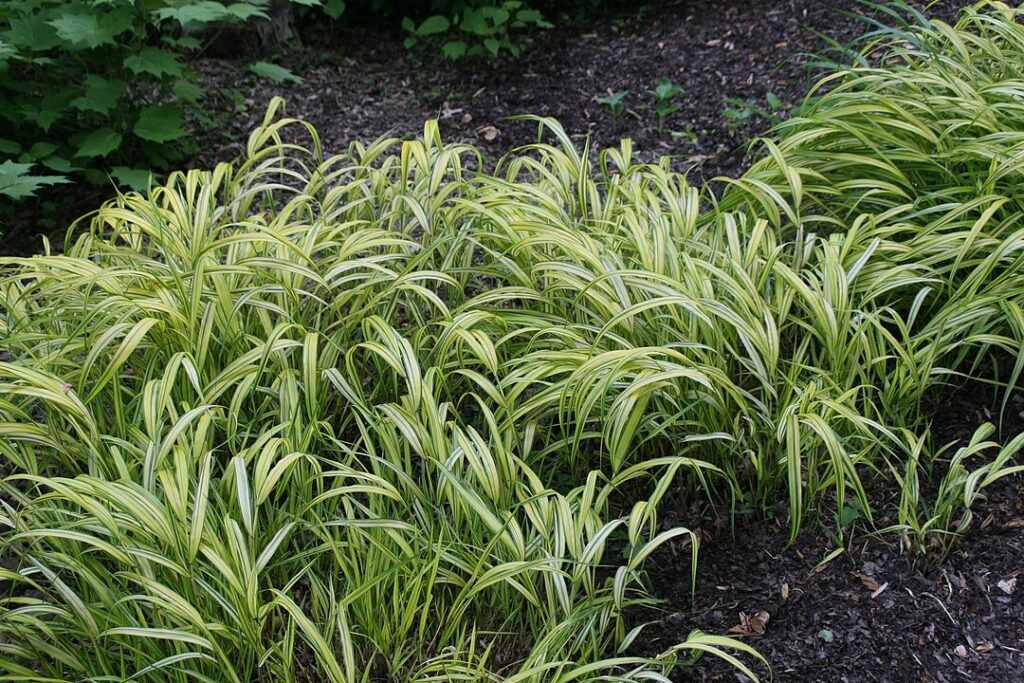
Japanese forest grass brings a gentle, flowing look to late-season beds, especially when many plants begin to slow down. Its arching blades move softly with each breeze, creating a calm rhythm across the garden. The leaves keep their shape well into autumn, which helps maintain interest during quieter weeks. Many gardeners use it along borders where its soft motion is easy to notice. It also works well as a contrast to broad-leaf plants that hold still during this part of the season.
This plant grows best in partial shade, especially in warm climates. Moist, well-drained soil helps keep the foliage bright and healthy as temperatures shift. The chartreuse varieties stand out and add gentle brightness to shaded areas. Gardeners also appreciate that it spreads slowly, making it simple to manage. It remains one of the most popular choices for texture in late-season beds.
Switchgrass
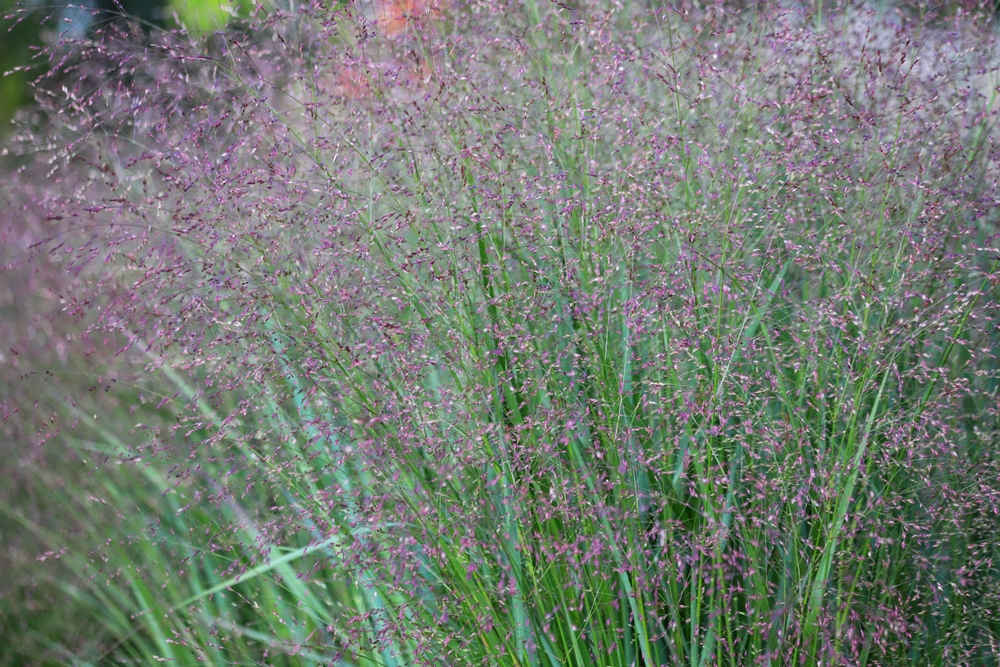
Switchgrass rises tall and creates airy plumes that sway freely in the wind. The stems remain upright even after cooler weather arrives, giving beds a sturdy look without feeling stiff. Sunlight catches the seed heads, bringing a soft sparkle to the garden in the late afternoon. Many gardeners enjoy its natural look during the final stretch of the growing season. It serves as a reliable backdrop for autumn bloomers.
This grass grows well in sunny areas with dry or average soil. Its foliage often shifts to warm tones as the season progresses, which adds depth to garden beds. Birds visit frequently to pick at the seeds, adding movement beyond the plant itself. It pairs nicely with asters, goldenrod, and other late performers. Switchgrass remains a favorite for anyone wanting motion and height.
Fountain Grass
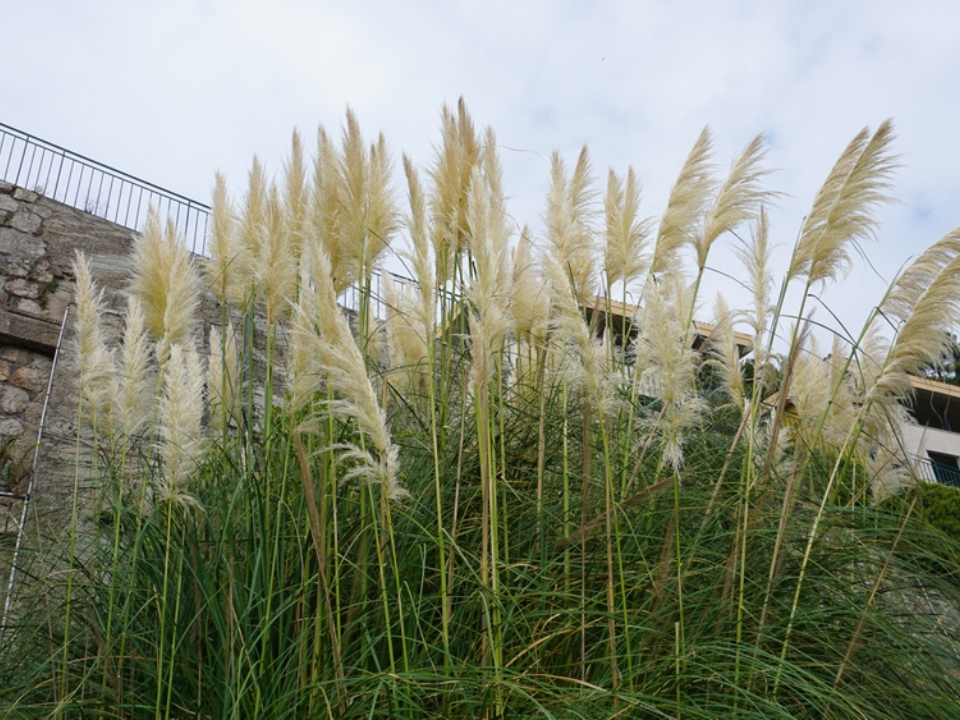
Fountain grass forms elegant, rounded clumps that arch outward like a fountain. The feathery plumes emerge in late summer and last well into fall. Each plume moves smoothly with a light breeze, bringing steady motion to still areas of the garden. Many gardeners place it near paths so visitors can appreciate the shifting textures. The plant holds its shape even after the first frost.
It thrives in full sun and well-drained soil. The plumes range from cream to burgundy depending on the variety, creating plenty of options for different garden styles. Compact types fit well in small beds or narrow borders. Once mature, the plant maintains its form with very little effort. It remains one of the most reliable choices for late-season motion.
Little Bluestem
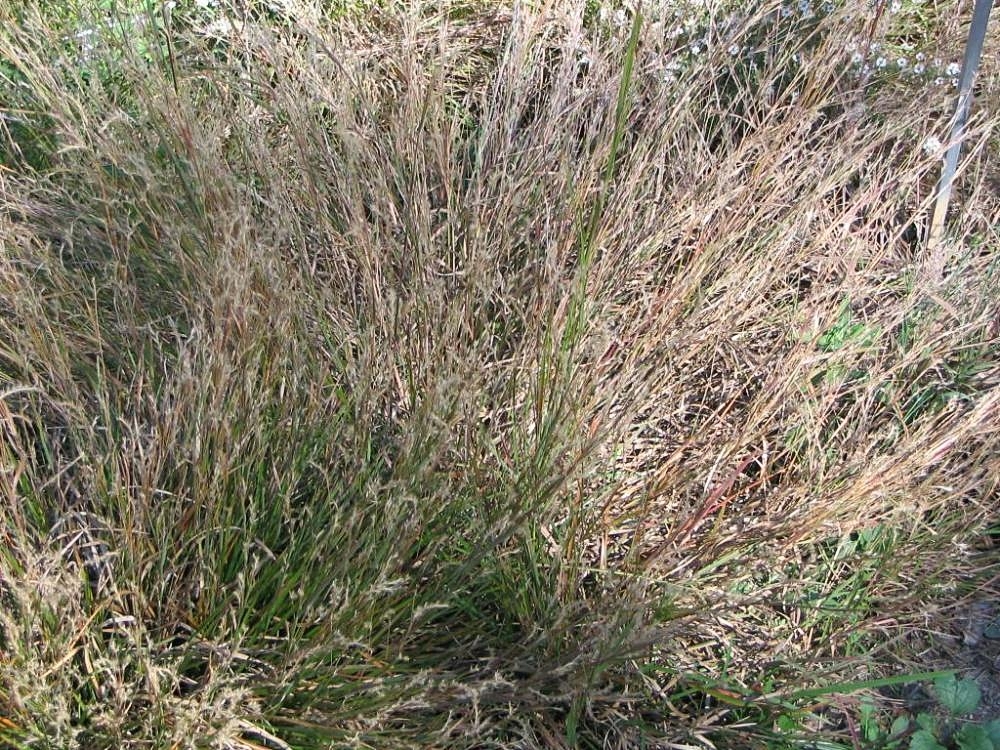
Little bluestem begins the season with blue-green blades that stand in tidy, upright clumps. As autumn approaches, the foliage shifts to warm hues that stand out in fading beds. The stems move in thin lines that ripple with each gust of wind. Its fine seed heads add texture without overwhelming nearby plants. Gardeners value it for both color and motion.
This plant manages heat and dry soil with ease. Birds often visit for the seeds, which keeps the garden active during slow weeks. Little bluestem pairs well with coneflower, rudbeckia, and other sun-loving perennials. The clumps stay narrow, making them simple to place. This grass continues to be a dependable late-season feature.
Autumn Moor Grass
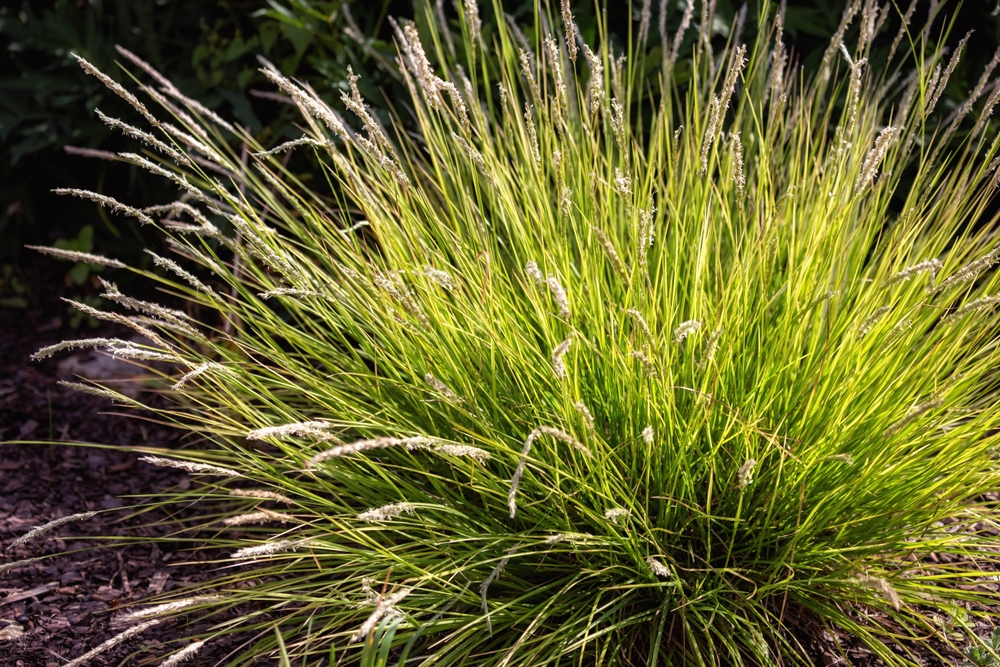
Autumn moor grass forms soft mounds that remain attractive long after other plants fade. Its slender blades shimmer when the breeze passes through. The plant brings a smooth, even texture that blends well with bold foliage or tall grasses. Many gardeners enjoy how it fills empty spaces without drawing too much attention. Its appearance stays steady well into cooler months.
This grass prefers sunny spots and tolerates poor soil. The seed heads rise lightly above the foliage and bring an airy touch to quiet beds. It grows slowly, keeping its shape neat throughout the season. Gardeners often plant it at the front of borders for a tidy look. Autumn moor grass remains a subtle but valuable addition to late-season gardens.
Sea Oats
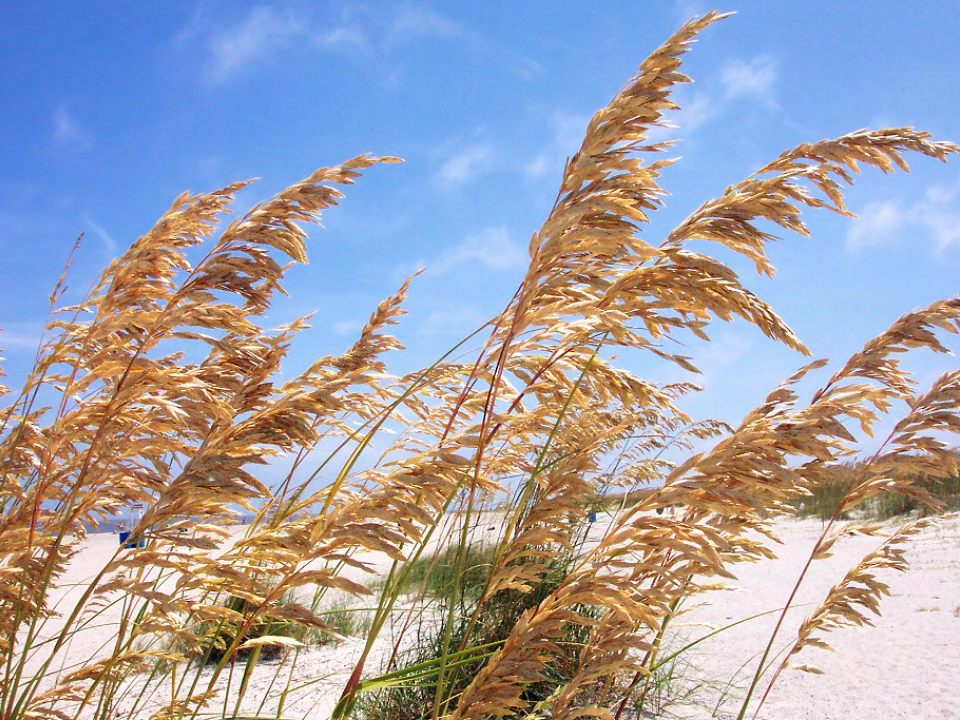
Sea oats create long, nodding seed heads that move beautifully during breezy days. The motion is rhythmic and soothing, especially in wide, open garden spaces. Their upright stems stand tall late into the season, even as temperatures begin to drop. The plant adds a natural, coastal feel to garden beds. Many gardeners appreciate its relaxed look during autumn.
Sea oats grow well in sandy or dry soil and tolerate tough conditions. The seed heads develop warm tones that complement autumn colors. Because the plant spreads, gardeners usually choose a spot with space to spare. Birds enjoy the seeds as the season winds down. It remains striking in both naturalistic and formal beds.
Feather Reed Grass
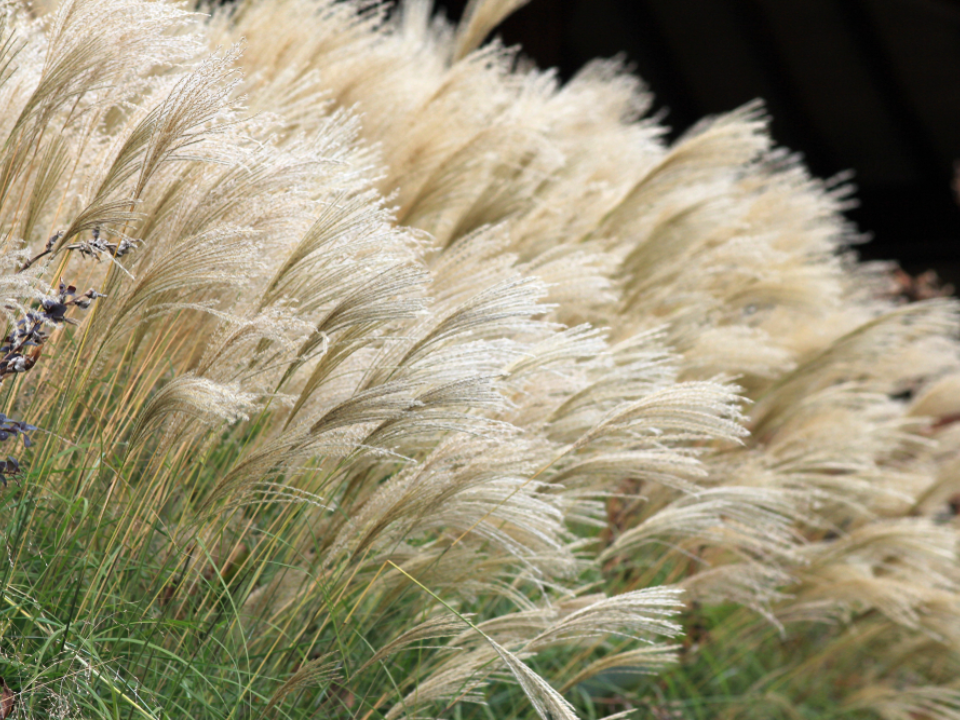
Feather reed grass produces tall plumes that hold firm above the rest of the bed. The plumes shift gently in the wind and stay upright through early winter. The narrow stems give the garden a clean, linear look. Sunlight highlights the plumes as days grow shorter. Many gardeners use it for height without adding heaviness.
This plant grows best in sunny areas with well-drained soil. The plumes change color as autumn arrives, bringing warm tones to fading beds. It works well in rows, clusters, or single plantings. The shape remains steady regardless of weather changes. Feather reed grass continues to be a trusted choice for structure and movement.
Siberian Iris

Siberian iris keeps its upright, ribbon-like foliage long after its flowers are gone. The leaves catch each breeze and create gentle motion in late-season beds. The narrow shape adds a different rhythm compared to surrounding plants. Many gardeners enjoy using it to break up areas with wide leaves or dense clumps. It remains visually strong through much of autumn.
This iris prefers moist soil but adapts once established. The clumps expand slowly and help fill quiet garden corners. Even without flowers, the foliage brings height and structure. It pairs nicely with daylilies, ornamental grasses, and other low-maintenance perennials. Gardeners consider it a reliable late-season presence.
Purple Love Grass
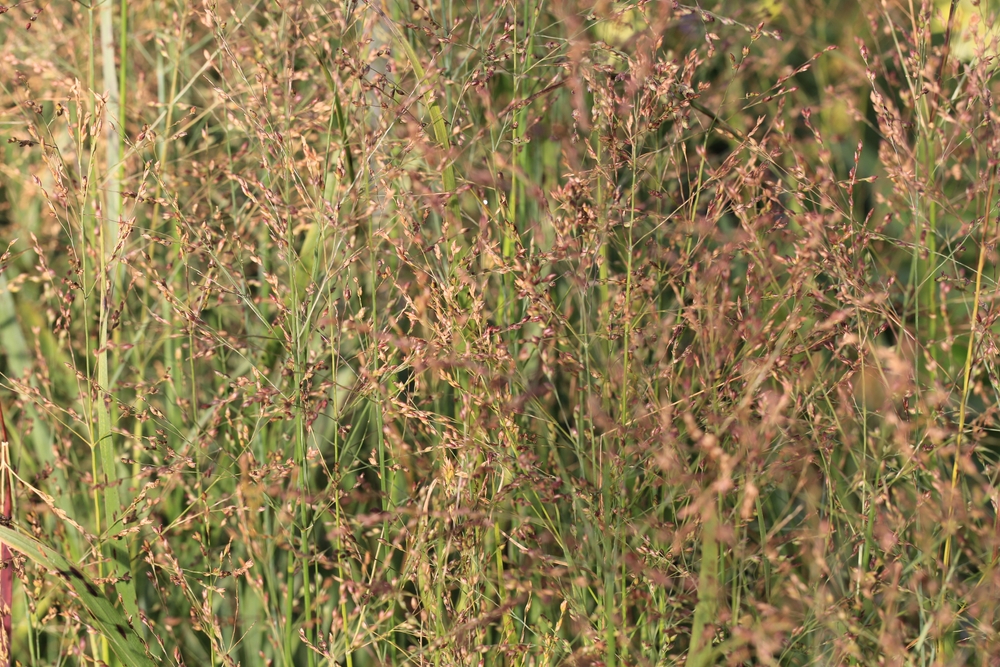
Purple love grass forms airy clouds of purple-tinted seed heads that dance in the wind. The haze-like effect adds softness to beds that feel heavy at the end of the season. Its gentle movement draws attention without overwhelming nearby plants. Many gardeners enjoy its ability to brighten dull areas. The plant brings a dreamy look to autumn gardens.
It grows well in sunny, dry locations and needs little care once established. The color shifts as the weather cools, adding warm notes to the garden. The seed heads remain attractive even after they dry. It works beautifully along paths where the movement can be appreciated. Purple love grass adds both color and motion at the perfect time.
Japanese Blood Grass

Japanese blood grass creates striking red blades that sway freely in the wind. The color deepens as autumn progresses, making it especially appealing late in the season. The upright, narrow blades move in sharp lines that contrast with broader foliage. Many gardeners plant small clusters for dramatic effect. It brings color at a time when beds begin to fade.
This plant prefers sunny areas with regular moisture. It grows slowly, which keeps the clumps neat and contained. The red tips brighten beds during slower garden weeks. It pairs well with ornamental grasses or muted foliage. Gardeners value its ability to stay vibrant well into fall.
Sedges
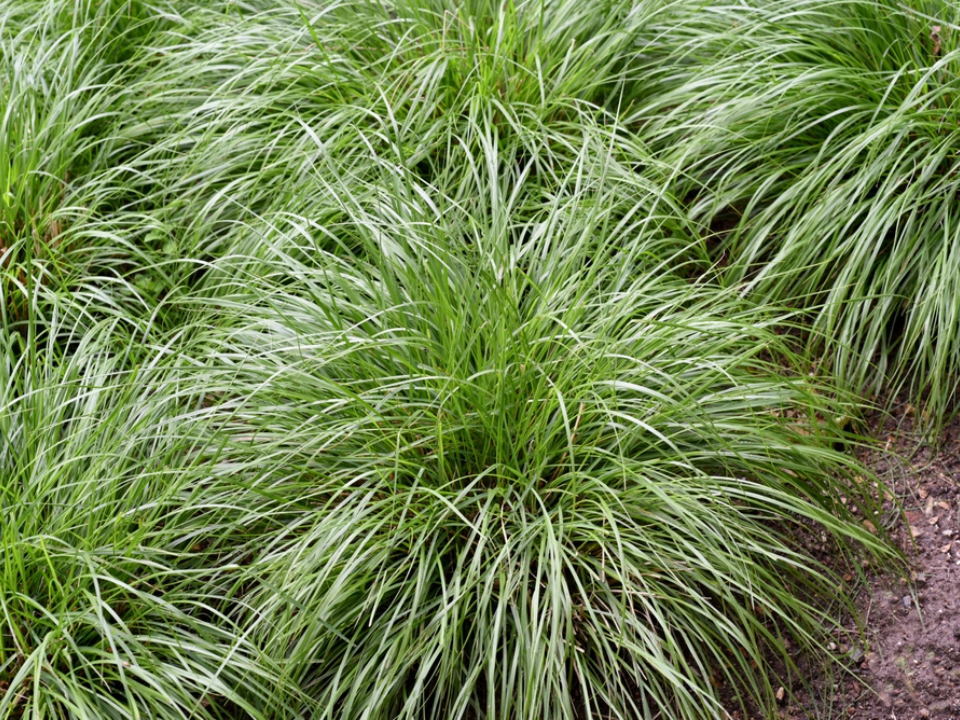
Sedges bring a fine, delicate texture that moves easily with soft winds. The narrow blades add gentle motion without overwhelming nearby plants. Many varieties stay lush through late-season weather. Gardeners enjoy their ability to soften edges and fill small gaps in a natural way. They add grace to beds that feel stiff or heavy.
Different types of sedges work in sun or shade, depending on the species. Many prefer moist soil, especially as temperatures begin to dip. Some varieties spread, giving beds a natural flow. The foliage remains tidy from summer into autumn. Sedges stay reliable through the final phase of the season.
Prairie Dropseed
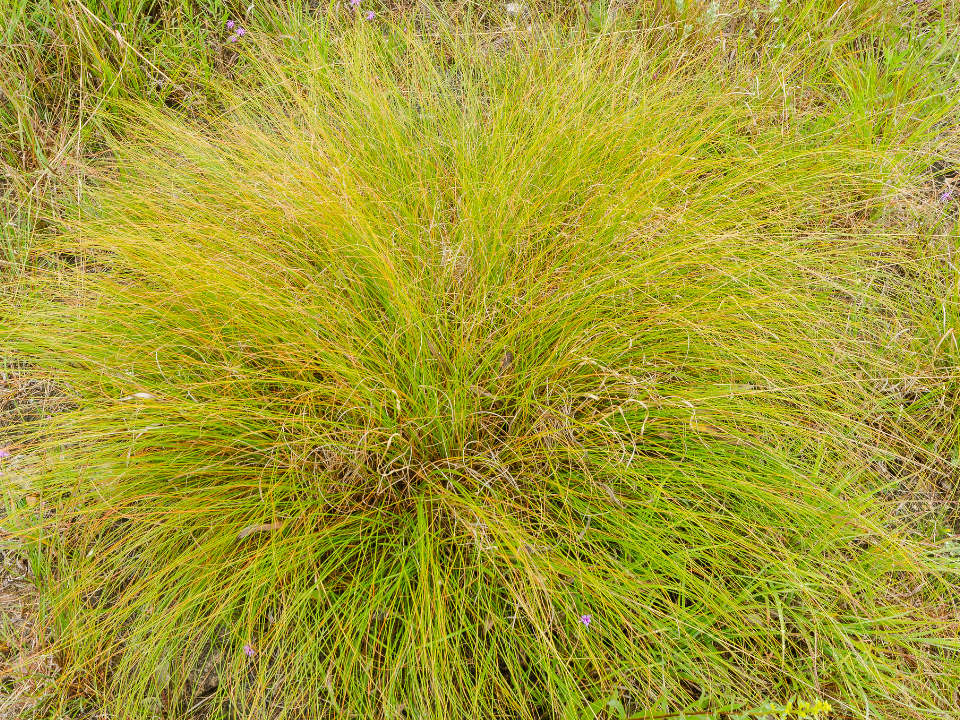
Prairie dropseed forms fountain-like mounds that sway smoothly with each breeze. The fine blades create motion even on quiet days. Its seed heads rise above the foliage and move in thin, airy strands. Many gardeners appreciate the pleasant scent released when the foliage is brushed. The plant brings a graceful touch to late-season beds.
It grows well in sunny, dry places and stays healthy with minimal care. The foliage shifts to warm tones as autumn continues. Prairie dropseed works well as a single plant or as a mass planting. Birds often visit for the seeds. The plant remains attractive well past the first frost.
Perovskia
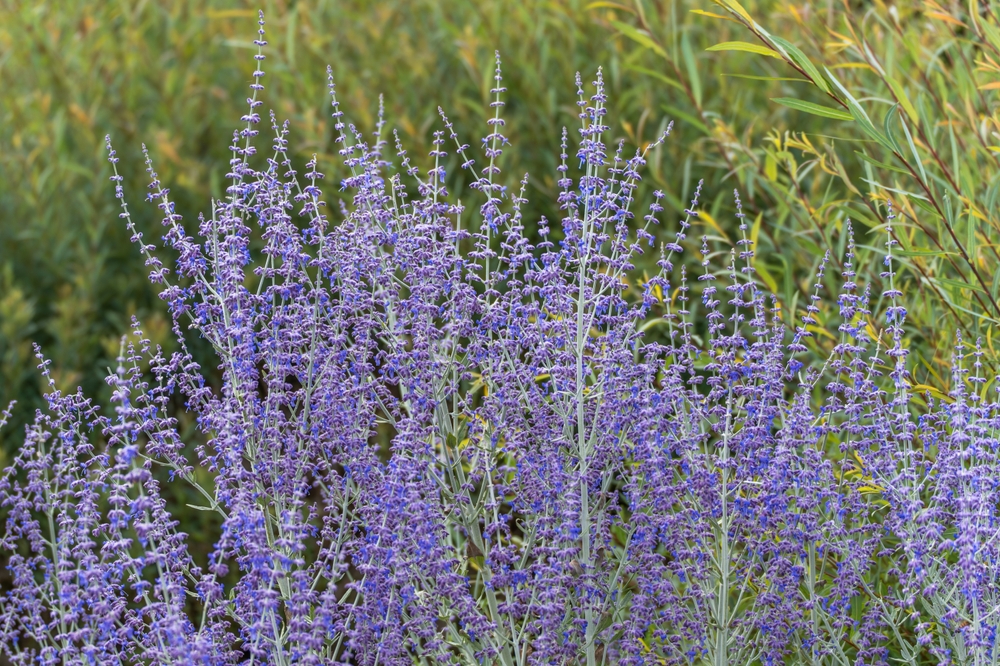
Perovskia offers soft, silvery stems that move lightly in the wind. The airy flower spikes remain attractive through much of autumn. The plant brings a gentle shimmer that catches light during shorter days. Many gardeners enjoy its scent and its ability to stay upright. It adds height without feeling heavy.
It thrives in sun and poor soil conditions. The lavender spikes fade slowly as the season progresses. Pollinators visit frequently during warmer days. Gardeners like placing it beside grasses for contrast. Perovskia stays dependable from late summer into fall.
Blue Fescue

Blue fescue grows in small, rounded clumps that sway gently with every breeze. The steel-blue blades stand out among autumn colors. This plant keeps a tidy shape even as temperatures shift. Many gardeners use it in borders or rock gardens for cool contrast. It stays visually pleasing all season long.
It prefers sunny areas with well-drained soil. The color holds steady into autumn and sometimes into winter. Blue fescue pairs nicely with plants that have warm-toned foliage. It remains compact and easy to manage. Gardeners value it for steady texture and quiet motion.
This article originally appeared on Avocadu.
